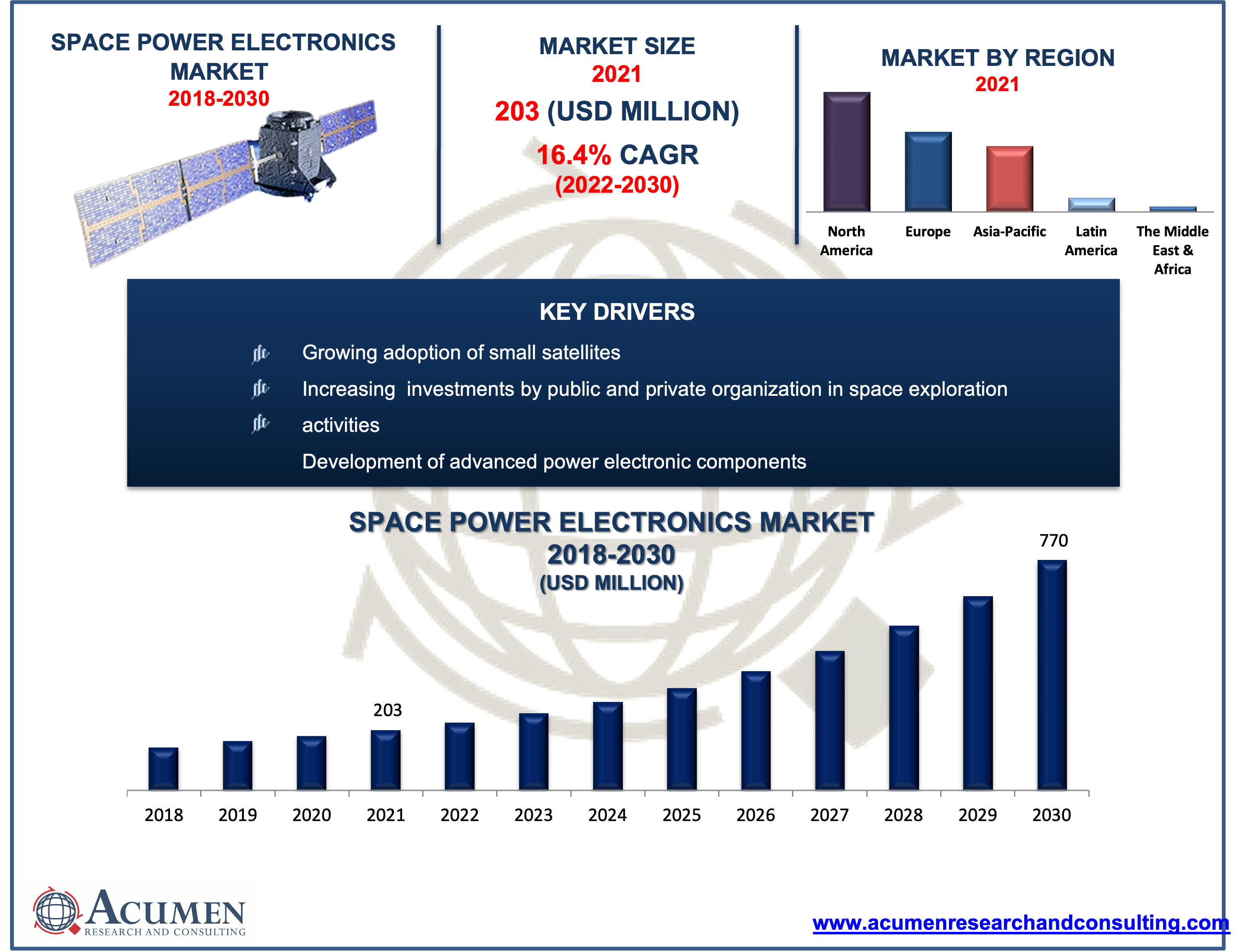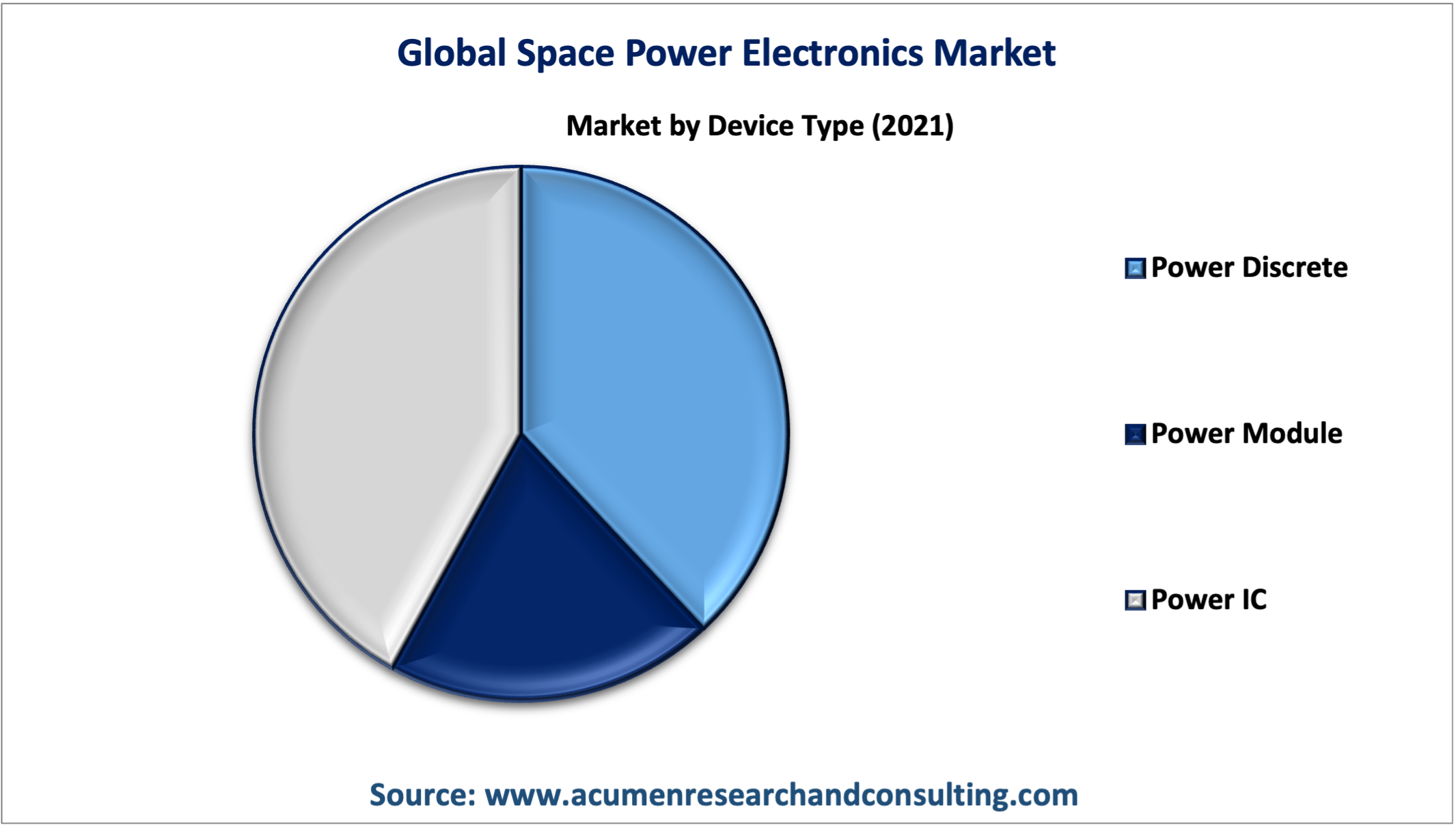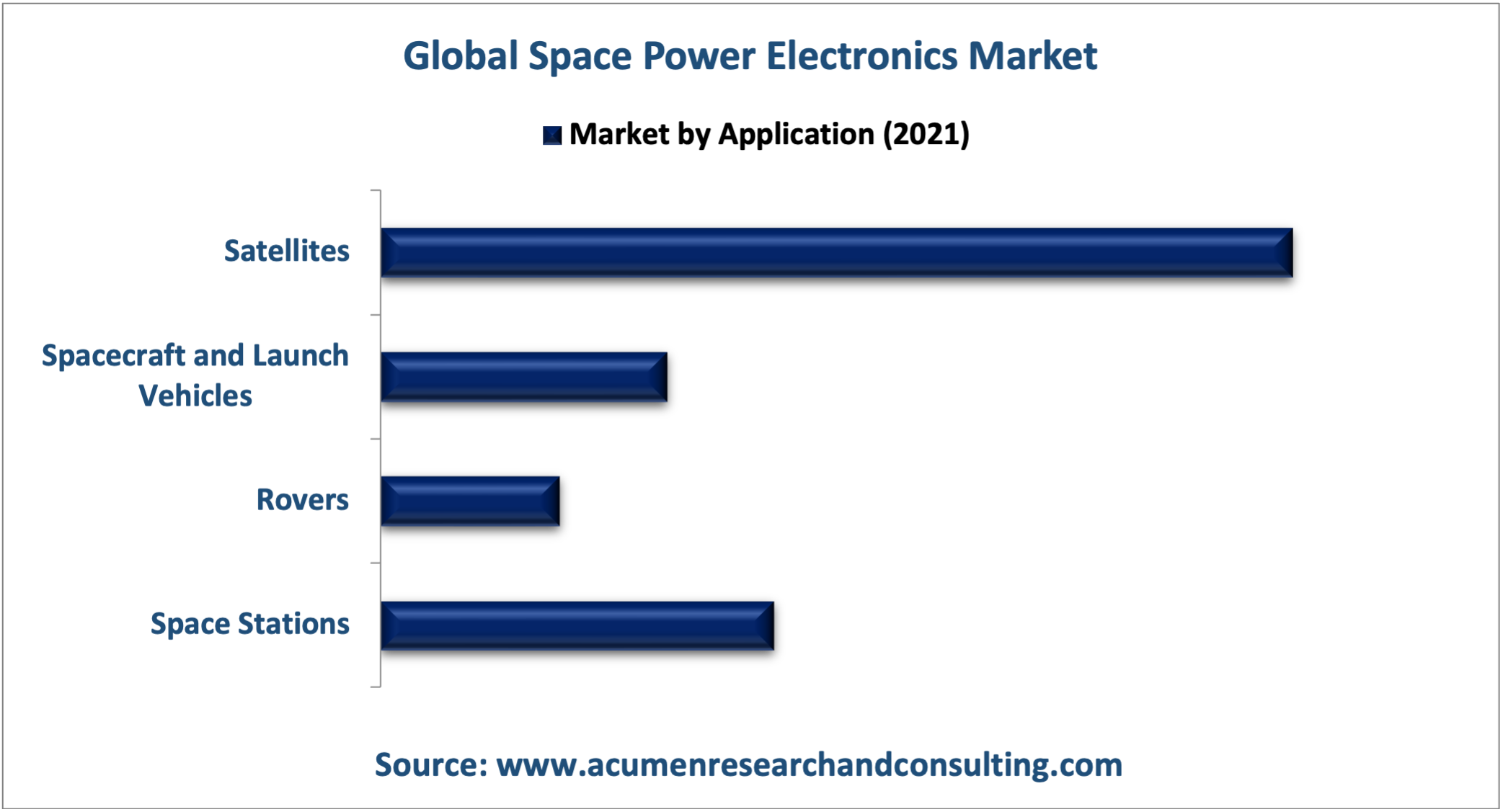Space Power Electronics Market
Published :
Report ID:
Pages :
Format :
Space Power Electronics Market
Report Coverage
- Industry Dynamics
- Market Size and Forecast Data
- Segment Analysis
- Competitive Landscape
- Regional Analysis with a Niche Focus on Country-Level Data
- High Level Analysis - Porter's, PESTEL, Value Chain, etc.
- Company Profiles of Key Players
- Option to Customize the Report As Per Your Specific Need
Request Sample Report
The Global Market For Space Power Electronics accounted for US$ 203 Mn in 2021 and is estimated to reach US$ 770 Mn by 2030, with a significant CAGR of 16.4% from 2022 to 2030
Power electronics is a difficult discipline to master since the power levels being generated and managed span numerous orders of magnitude, with a wide range of functions for an infinite number of applications. For all forms of space applications, power systems cover all areas of energy production, storage, conditioning, distribution, and conversion. Interplanetary probes or the International Space Station (ISS) missions can last anything from a few minutes to decades and require anywhere from a few watts to tens of kilowatts of power (large space vehicles for telecommunications such as for the ISS). Because the power system is the spacecraft's main source of energy, it must be protected from malfunctions that could cause it to degrade or possibly shut down, especially in short-circuit circumstances.

Market Growth Drivers:
- Growing adoption of small satellites
- Increasing developments of advanced power electronic components
- Increasing investments in space exploration activities
- Advancements in power semiconductor switch technology
Market Restraints:
- High cost of designing and developing these systems
- Complex design and integration process
Market Opportunities:
· Miniaturization of space DC-DC converters
- Robust demand from R&D activities in the space power sector
Report Coverage
| Market | Space Power Electronics Market |
| Market Size 2021 | US$ 203 Mn |
| Market Forecast 2030 | US$ 770 Mn |
| CAGR | 16.4 % During 2022 - 2030 |
| Analysis Period | 2018 - 2030 |
| Base Year | 2021 |
| Forecast Data | 2021 - 2028 |
| Segments Covered | By Device Type , By Platform Type, By Voltage, By Current, By Application And By Geography |
| Regional Scope | North America, Europe, Asia Pacific, Latin America, and Middle East & Africa |
| Key Companies Profiled | Infineon Technologies, Texas Instrument Incorporated, STMicroelectronics, Onsemi, and Renesas Electronics Corporation. |
| Report Coverage |
Market Trends, Drivers, Restraints, Competitive Analysis, Player Profiling, Regulation Analysis |
| Customization Scope |
10 hrs of free customization and expert consultation |
Market Dynamics
The rising number of space exploration activities is the primary factor that is creating robust demand for the space power electronics industry. Space exploration and the innovation it implies are critical drivers for expanding space science and technology into new sectors. They generate new prospects for addressing global concerns by triggering new alliances and developing capabilities. Over the years, space sciences and planetary missions have progressed significantly, with new players joining the fray. This trend may be seen in the existing and proposed robotic exploration missions of the solar system, which include the US, China, Europe, Japan, and India. Adding to that, the growing number of investments in space exploration activities is also fueling the market demand. Private investment in space companies in 2020 set a new annual record, defying industry uncertainties that COVID-19 would discontinue the past decade’s momentum. With $8.9 billion in private investment in space enterprises it set a new annual record in 2020.
However, the high cost of designing and developing space power systems, as well as the complex design and integration process, are some of the factors limiting the growth of the global space power electronics market. On the other hand, the increasing number of R&D activities in the space sector is likely to attain a significant growth rate throughout the forecast period 2022 – 2030. Space power electronics, which can resist the harsh conditions of space, are essential for a satellite's long-term operation. Space companies have been researching and creating space-qualified parts for satellite development with two goals in mind: keeping their country’s space programs independent and making future satellites more competitive. Moreover, advancements in power semiconductor switch technologies, and miniaturization of space power devices, are some of the aspects that will generate certain growth prospects for the market in the coming years.
Market Segmentation
The global space power electronics market is segmented based ondevice type, platform type, current, voltage, application, and geography.
Market by Device Type
· Power Module
· Power Discrete
· Power IC

Among the device types, the power IC segment occupied a significant amount of share in 2021, followed by the power module segment. Power IC solutions, designed to complement rad-hard and regular hermetic MOSFETs, satisfy the demanding requirements of deep spaceand other severeenvironments. Power IC solutions ensure that power systems perform at optimal power levels,peak efficiency, and higher power density by focusing on creative design, robust packaging methods, and superior dependability.
Market by Platform Type
- Command and Data Handling
- Power
- ADCS
- Propulsion
- TT&C
- Structure
- Thermal System
The command and data handling sub-segment is one of the significant elements of space power electronics. For instance, NASA's space-based observatories, orbiters, landers, flyby spacecraft, and robotic and sample-return missions all require sophisticated command and control systems. To support NASA's aims and various missions and projects under progress, advancements in technology related to command and data handling, as well as instrument electronics, are needed.
Market by Voltage
- Medium Voltage
- High Voltage
- Low Voltage
Based on voltage, the high voltage sub-segment is expected to gain a significant market share in the coming years. With the rapid advancement of aerospace technology around the world, latest generation of applications, such as deep space exploration, space welding, high power electric propulsion, and space solar power stations, demands a high-power and high-reliability space high-voltage power supply. Due to the severity of the space environment and the performance constraints of current aerospace-grade electronic gears, it is difficult for the space power supply to directly achieve high-voltage output from the bus.
Market by Current
- Up To 25A
- 25-50A
- Above 50A
Almost every segment in this category plays a crucial role in their specific range. The electrical power subsystem, which contains two solar panels and two nickel-hydrogen batteries, is in charge of generating, storing, and delivering electricity to the orbiter systems. Up to 25A current range is used for miniature power devices that run on a small amount of current. However, the above 50A current range is utilized by huge power devices that carry very critical operations in satellites, rovers, space stations, etc.
Market by Application
- Spacecraft & Launch Vehicle
- Satellite
- Rovers
- Space Stations

In 2021, the satellite segment held a noteworthy amount of share in the application segment as they are increasingly being adopted in modern communication technologies. Advancements in technologies, commercialization in the industry, and private investments have fueled an explosion of activity in the small satellite world over the last decade. Furthermore, the development of tiny hardware systems and the launch of wireless satellite internet are making use of significant prospects in the sector of satellite-enabled communication.
Space Power Electronics Market Regional Overview
North America
· U.S.
· Canada
Europe
· U.K.
· Germany
· France
· Spain
· Rest of Europe
Latin America
· Mexico
· Brazil
· Rest of Latin America
Asia-Pacific
· India
· Japan
· China
· Australia
· South Korea
· Rest of Asia-Pacific
Middle East & Africa
· South Africa
· GCC
· Rest of Middle East & Africa
The growing number of satellites in North America boosts the regional market growth
Based on the regional segmentation, the North American region gathered the maximum market share all through the forecast period. U.S leads the North America region proving its dominance in the coming years due to the increasing investments by US government in advanced space power electronics to modify the effectiveness and quality of satellite communication and deep space exploration. In addition, the presence of the world’s leading space agency - NASA, along with a segment of commercial space companies such as Space X, in the United States is propelling the regional space power electronics market forward.
Competitive Landscape
Some of the top vendors offered in the professional report include Infineon Technologies, Texas Instrument Incorporated, STMicroelectronics, Onsemi, and Renesas Electronics Corporation.
Frequently Asked Questions
How much was the estimated value of the global space power electronics market in 2021?
The estimated value of global space power electronics market in 2021 was accounted to be US$ 203 Mn.
What will be the projected CAGR for global space power electronics market during forecast period of 2022 to 2030?
The projected CAGR of space power electronics market during the analysis period of 2022 to 2030 is 16.4%.
Which are the prominent competitors operating in the market?
The prominent players of the global space power electronics market involve Infineon Technologies, Texas Instrument Incorporated, STMicroelectronics, Onsemi, and Renesas Electronics Corporation
Which region held the dominating position in the global space power electronics market?
North America held the dominating share for space power electronics during the analysis period of 2022 to 2030.
Which region exhibited the fastest growing CAGR for the forecast period of 2022 to 2030?
Asia-Pacific region exhibited fastest growing CAGR for space power electronics during the analysis period of 2022 to 2030.
What are the current trends and dynamics in the global space power electronics market?
Growing adoption of small satellites, increasing investments by public and private organization in space exploration activities, and development of advanced power electronic components drives the growth of global space power electronics market.
By segment device type, which sub-segment held the maximum share?
Based on device type, power IC segment held the maximum share for space power electronics market in 2021.


